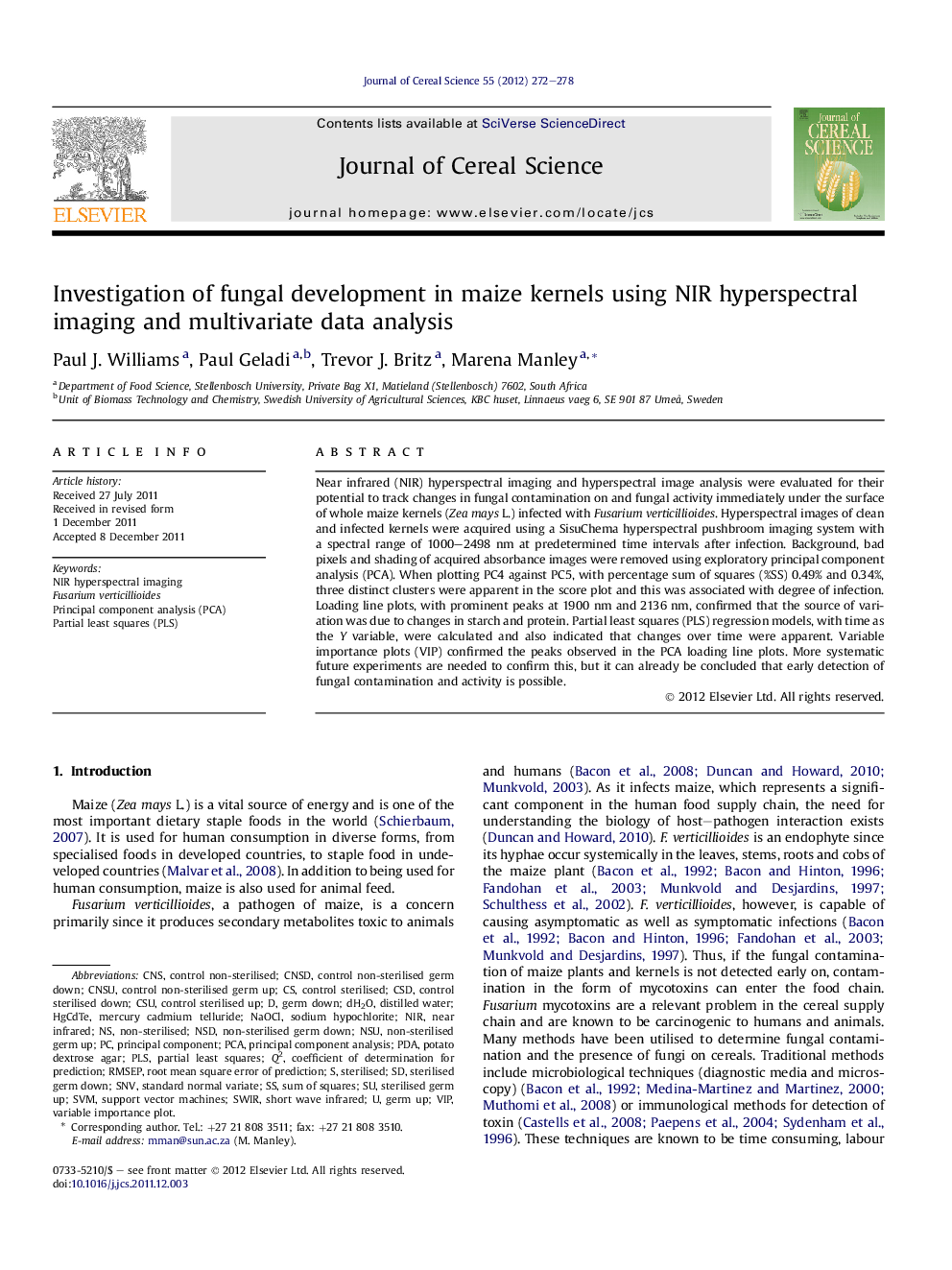| Article ID | Journal | Published Year | Pages | File Type |
|---|---|---|---|---|
| 4516011 | Journal of Cereal Science | 2012 | 7 Pages |
Near infrared (NIR) hyperspectral imaging and hyperspectral image analysis were evaluated for their potential to track changes in fungal contamination on and fungal activity immediately under the surface of whole maize kernels (Zea mays L.) infected with Fusarium verticillioides. Hyperspectral images of clean and infected kernels were acquired using a SisuChema hyperspectral pushbroom imaging system with a spectral range of 1000–2498 nm at predetermined time intervals after infection. Background, bad pixels and shading of acquired absorbance images were removed using exploratory principal component analysis (PCA). When plotting PC4 against PC5, with percentage sum of squares (%SS) 0.49% and 0.34%, three distinct clusters were apparent in the score plot and this was associated with degree of infection. Loading line plots, with prominent peaks at 1900 nm and 2136 nm, confirmed that the source of variation was due to changes in starch and protein. Partial least squares (PLS) regression models, with time as the Y variable, were calculated and also indicated that changes over time were apparent. Variable importance plots (VIP) confirmed the peaks observed in the PCA loading line plots. More systematic future experiments are needed to confirm this, but it can already be concluded that early detection of fungal contamination and activity is possible.
► NIR hyperspectral images were collected from infected maize kernels. ► Distinct clusters in the score plot were associated with degree of infection. ► PLS regression models indicated that changes occurred over time. ► The source of variation was due to starch and protein. ► Objective methods for early detection of fungi on maize kernels are important.
